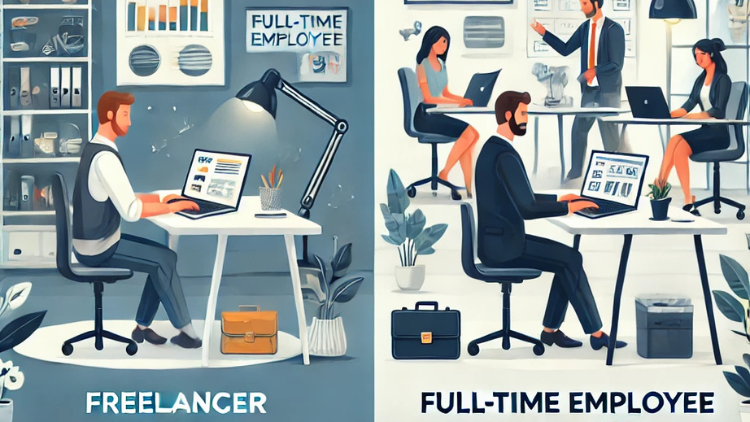
Introduction
In today’s dynamic work landscape, businesses are faced with more choices than ever when it comes to hiring talent. One of the biggest decisions companies face is whether to bring in a freelancer or hire a full-time employee. Each option has its own benefits and challenges, and the right choice ultimately depends on the specific needs of the project, budget, and long-term goals of the business. Here, we’ll explore the key differences between freelancers and full-time employees to help you make an informed decision.
1. Understanding Freelancers
What Is a Freelancer?
A freelancer is a self-employed professional who offers services on a project-by-project basis. Freelancers work with multiple clients and often bring specialized expertise, making them a valuable resource for businesses that need flexibility.
Benefits of Hiring Freelancers
- Cost-Effectiveness: Freelancers are generally paid for their work on a per-project basis, allowing businesses to save on overhead costs like benefits, insurance, and paid leave.
- Specialized Skills: Many freelancers focus on niche skills, making them perfect for projects that require a specific type of expertise.
- Flexibility: Freelancers can be hired quickly for short-term projects, allowing businesses to scale their workforce up or down based on current needs.
Drawbacks of Hiring Freelancers
- Limited Availability: Freelancers work with multiple clients, so their availability may be limited.
- Less Control: Unlike employees, freelancers often work independently, which can be challenging if the project requires close collaboration or supervision.
2. Full-Time Employees: A Long-Term Investment
What Is a Full-Time Employee?
A full-time employee is a worker who is employed by a business and typically works 35–40 hours a week. Full-time employees receive benefits like health insurance, paid leave, and job security, making them more integrated into the company.
Benefits of Hiring Full-Time Employees
- Consistency and Availability: Full-time employees are available to work solely for the business, providing consistent support on projects and a reliable schedule.
- Commitment and Company Knowledge: Over time, full-time employees develop a deep understanding of the business, which enhances productivity and can lead to greater loyalty.
- Collaboration and Control: With full-time employees, businesses have greater control over workflows and can foster a collaborative team environment.
Drawbacks of Hiring Full-Time Employees
- Higher Costs: Full-time employees come with additional costs, including benefits, insurance, and training.
- Limited Flexibility: Hiring full-time employees involves a long-term commitment, which may not suit businesses with fluctuating workload demands.
3. Deciding Which Is Right for Your Project
When deciding between a freelancer and a full-time employee, consider these questions:
- What is the Scope and Duration of the Project? Short-term projects with defined endpoints are often ideal for freelancers, whereas ongoing work aligns better with a full-time employee.
- What is Your Budget? Freelancers can be more affordable for one-off projects, while full-time employees may be a better investment if the project requires sustained support.
- How Important is Control and Collaboration? Full-time employees can be closely supervised, while freelancers may prefer autonomy in completing tasks.
Conclusion
Both freelancers and full-time employees bring unique strengths to the table. By assessing your project’s needs, timeline, and budget, you can make a choice that maximizes efficiency and results. Freelancers are a great fit for short-term, specialized projects requiring flexibility, while full-time employees are ideal for roles that benefit from stability, team integration, and long-term growth. Whatever your choice, understanding these differences will help you build a team that meets your business objectives.
4o

Leave your comment